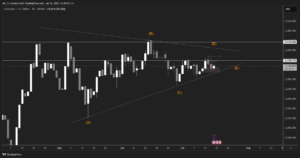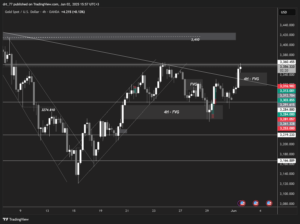Weekly Fundamental Reports in the US
In the US, all eyes will be on the Retail Sales for the month of February, released on the 16th of March. This report released by the US Census Bureau is a leading indicator that gives important information about consumer spending, which has a significant impact on the GDP.
In addition to the headline data, changes in the Retail Sales Control Group could trigger a market reaction as it is used to prepare the estimates of Personal Consumption Expenditures for most goods.
A reading below 0.4% will be considered bearish for the USD; however, a reading above this estimated number will be considered bullish for the USD.
Another important news will be announced by the FOMC minutes on the same date., FOMC stands for The Federal Open Market Committee which organizes 8 meetings a year and reviews economic and financial conditions, The Federal Reserve is set to raise interest rates for the first time since the pandemic.
Fed Chair Powell’s message of uncertainty given the war could also weigh on the dollar.
Bank of England Interest Rate Decision
In England, all eyes will be on the BoE interest rate decision announced by the Bank of England. If the BoE is hawkish about the inflationary outlook of the economy and raises the interest rate to 0.75% it is bullish for the GBP. Otherwise, if the BoE keeps the interest rates at 0.5% or cuts the interest it is seen as negative.
Bank of Japan Interest Rate Decision
In Japan, the BoJ interest rate decision will be announced by the Bank of Japan on Friday, March 18. A rise above -0.1% will be bullish for JPY; however, if the BoJ maintains or cuts the interest rate, it will be considered bearish for JPY.
Employment and Unemployment rate in Australia
In Australia, Employment Change and Unemployment Rate reports will be announced on Thursday. The Employment Change released by the Australian Bureau of Statistics is a measure of the change in the number of employed people in Australia.
A rise in the indicator has a positive effect on consumer spending behaviour which will lead to economic growth. Therefore, a high reading is seen as bullish for the AUD, and a low reading is seen as negative for the AUD. Moreover, a rate hike in the Unemployment Rate report indicates a lack of expansion in the labour market.
A rise above 4.1% leads to a weakening of the Australian economy; therefore, a low reading is seen as positive. However, a reading above 4.1% is seen as bearish.
New Zealand GDP
In New Zealand, Gross Domestic Product will be announced on the 17th of March. It is released by Statistics New Zealand and highlights the overall economic performance on a quarterly basis. A rise in the GDP rate signifies an improvement in the economic conditions, which calls for tighter monetary policy, while a drop suggests deterioration in the activity.
A reading below 3.2% will be considered bearish for the NZD; however, a reading above the forecasted number will be considered bullish.
Technical Outlook:
GBP/USD:

The pair is trading at 1.3026. If this pair continues to trade below 1.3120 the bearish movement will accelerate and target the next support at 1.2750. However, if the price breaks above 1.3120 the bearish scenario may no longer be valid, a bullish movement will occur and target the resistance level at 1.3305.
A break above the first resistance will accelerate the uptrend and keep growing towards 1.3405.
USD/JPY:

After reaching the multi-year high, the USD/JPY has dropped to the 117.70 area, a corrective pullback may occur to target the highest level since January 2017 at the 118.45 mark. A break above this level, the pair will target the tops level marked during 2017 around 118.70 ahead of the next resistance at 119.00.
On the flip side, a break below 117.65 will motivate bearish traders and target January 2022 tops, respectively near 116.5 and 116.35, a break below this level will target “the last defence for the pair buyer” point at 114.65.
AUD/USD:

After the RBA Minutes on Tuesday, the Aussie pair prints at the 0.7205 area, if the bearish movement continues to accelerate this pair will be directed to the 0.7222 mark. A break above this level will target resistance levels at 0.7263, 0.7338, and 0.7376.
However, a clear downside break of an upward sloping trend line from late January, around 0.7180 at the latest, joins bearish signals to direct the pair sellers towards early January’s low at 0.7130 and 0.7100 thresholds.
NZD/USD:

Late weakness in US equities, and Chinese economic growth concerns have knocked the commodity prices. So, this week hasn’t gotten off to a good start for the kiwi. Although domestic data, mentioned above, coming up this week might be more influential on this pair.
A break above 0.6775 might target the resistance levels at 0.6875, 0.6995, and 0.710. However, if this pair continues to trade below the pivotal point, it will target the support level at 0.6540.
Disclaimer: This article is not investment advice or an investment recommendation and should not be considered as such. The information above is not an invitation to trade and it does not guarantee or predict future performance. The investor is solely responsible for the risk of their decisions. The analysis and commentary presented do not include any consideration of your personal investment objectives, financial circumstances or needs.





